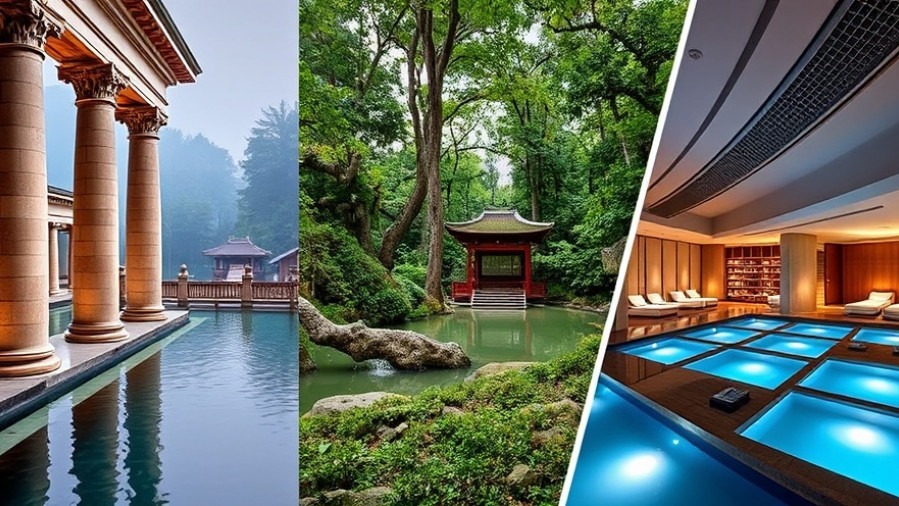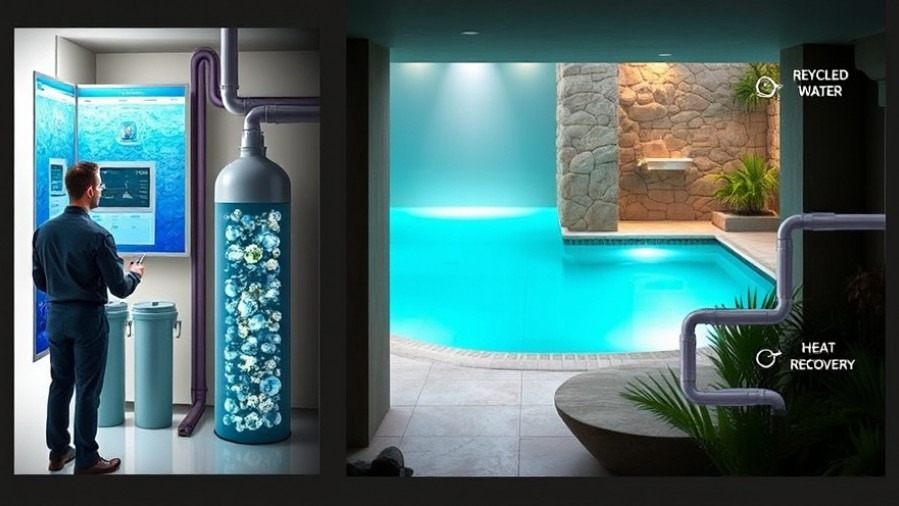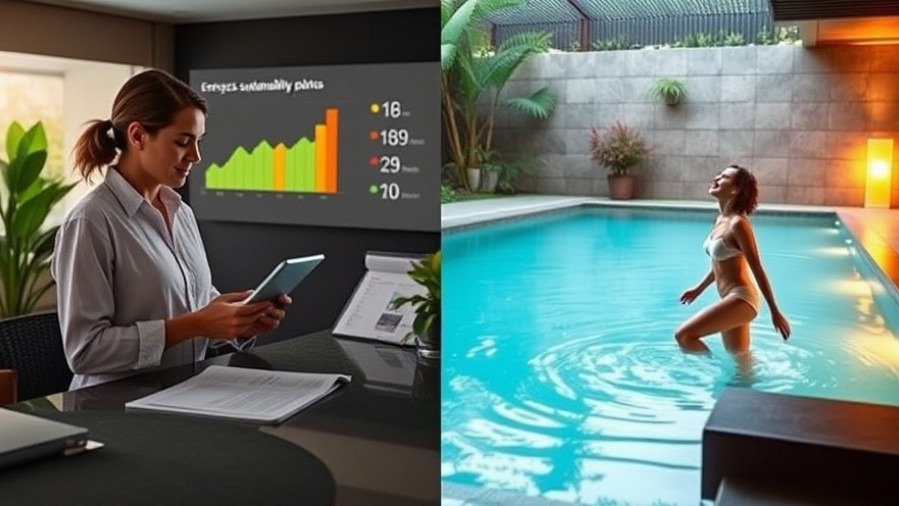
When Steam Meets Snow: A New Era of Spa Wellness
Steam curls through the air as snowflakes drift from the ceiling — a whisper of winter in a room built for warmth and renewal. Guests step from the sauna, cheeks flushed and breathing deep, not into the shock of an icy plunge but into a misty chamber where the temperature drops softly, like nature’s own exhale.
This isn’t the spa experience of the past. It’s the new face of hydrothermal wellness — one where technology, design, and sustainability work together to create something profoundly human.
For centuries, water rituals have offered one of the simplest, most universal forms of healing.
From the Roman baths and Finnish saunas to Japanese onsens and Turkish hammams, cultures across the world have always turned to the balance of heat and cold to restore body and spirit.
Today, that timeless ritual is being reshaped for a new era — one defined by climate awareness, modern science, and inclusive design.
“Guests today aren’t just seeking heat and contrast,” explains Don Genders, CEO of Design for Leisure and Chair of the Global Wellness Institute’s Hydrothermal Initiative.
“They’re seeking experiences that connect them — to their bodies, to nature, and to a more sustainable way of living.”
That shift has sparked a quiet revolution in the spa world. Engineers are rethinking how water is heated, filtered, and reused.
Designers are swapping shock plunges for gentler cool-downs. And operators are learning that luxury can coexist beautifully with conservation.
Ancient Traditions, Modern Transformations
The connection between water and wellness is older than history itself. The Romans designed entire cities around their bathhouses. In Japan, soaking in an onsen is still a meditative, spiritual act.
Finland’s sauna culture remains so sacred that many families consider it their “temple of calm.”
What’s new is how these traditions are being reimagined for modern guests. Today’s spa-goer wants more than comfort — they want experiences grounded in science, purpose, and sustainability.
That’s where the Global Wellness Institute’s Hydrothermal Spa & Wellness Development Standards, now in its fourth edition, have changed the game.
The standards set the global benchmark for designing safe, energy-efficient, and environmentally responsible thermal circuits.
Under these guidelines, spa developers consider everything — from airflow and tile selection to energy recovery and filtration systems — long before the first wall goes up.
The result is a new generation of spas that deliver deep relaxation without deep environmental impact.

The Rise of Gentle Cooling: Redefining Contrast Therapy
Once upon a time, the bravest guests would leap from a scalding sauna straight into a cold plunge — a thrilling but jarring experience. The emerging trend of gentle cooling changes that entirely.
Companies like KLAFS and TechnoAlpin have led the way, introducing advanced snow and ice-mist rooms that cool the body gradually, not painfully.
The KLAFS FRIMAS Ice Steam Room maintains a refreshing 3–6 °C, combining mist, snow, and light to create a cooling environment that soothes the senses instead of shocking them.
Meanwhile, TechnoAlpin’s SnowRoom recreates a dry alpine climate at -10 °C using minimal water and reclaiming up to 80% of its own heat output.
“Gentle cooling allows everyone to benefit from contrast therapy,” says Genders. “It’s about recovery and inclusion, not competition.”
This soft transition — from warm to cool, not hot to freezing — invites guests of all ages and health levels to enjoy hydrothermal wellness safely.
As one visitor described after a session at The Lodge at Woodloch, “The snow room wasn’t scary — it was peaceful, almost magical. I felt calm, clear, and completely refreshed.”
Sustainability Becomes the Spa Standard
Behind the calm of every hydrothermal journey is a quiet revolution in engineering. Regenerative filtration, heat recovery, and smart water systems are reducing waste and saving thousands of gallons a month.
Sustainability is no longer a luxury — it’s the foundation of modern spa design.
At facilities using regenerative filtration systems, water is continuously cleaned and reused with minimal backwash waste — saving thousands of gallons each month.
Some spas combine variable-frequency pumps and heat-recovery loops, reducing energy use by 30–40%. Even the warm air from saunas can be redirected to preheat other areas or domestic hot water systems.
According to Xylem’s Defender® filtration case study, one European wellness center saw dramatic operational savings while improving clarity and air quality for guests. It’s proof that sustainability isn’t just good ethics — it’s smart economics.
Dr. Marc Cohen, integrative medicine researcher and longtime advocate of “wellness bathing,” calls it the bathing biome — the idea that architecture and nature can work in harmony to enhance the human experience.
“When design honors the environment,” he says, “it amplifies the healing potential of water.”

The Science of Balance: Why Gentle Heat and Cold Work Better
Science now validates what ancient cultures intuitively knew: alternating between heat and cold stimulates circulation, boosts metabolism, and supports mental clarity.
But the key, according to Dr. Susanna Søberg — a Danish physiologist and founder of the Søberg Institute — is moderation.
“You don’t need extreme temperatures to gain benefits,” Søberg explains. “Gentle exposure and natural rewarming are often more effective.
The body adapts better, and you get the same mood and metabolic improvements without the stress response.”
Her research supports what many spa operators have already observed: guests who follow smooth thermal transitions feel more energized and less fatigued afterward.
Søberg’s principle — ending cold sessions without artificial reheating — is even being integrated into staff training at leading spas around the world.
These advances mark a profound shift: hydrothermal bathing is no longer about endurance but about awareness. It’s a ritual of balance — warm and cool, energy and stillness, luxury and mindfulness.
Designing for the Human Experience
Aesthetically, the modern spa speaks a softer language. Designers favor natural materials, soft lighting, and biophilic architecture that brings nature indoors. Water, air, and light are treated not as utilities but as sensory tools.
The multisensory Aquamoon and Rainmoon showers by Dornbracht illustrate this philosophy perfectly — blending color, aroma, and sound to evoke emotions rather than just deliver function.
These spaces aren’t simply rooms; they’re experiences, choreographed to the rhythm of the body. And inclusivity lies at the heart of it all. Where old spas prized opulence, new ones prioritize accessibility.
Hydrothermal zones are now designed for diverse ages, mobility levels, and cultural backgrounds — reinforcing wellness as a shared human experience.
Actionable Wisdom for Spa Leaders and Wellness Seekers
What can we take from this new wave of hydrothermal innovation? For owners: build sustainability into your DNA. For guests: learn the rhythm of contrast — warmth, coolness, calm.
The modern spa experience isn’t about extremes; it’s about balance, beauty, and awareness.
For spa owners, the lesson is clear:
Start with sustainability. Integrate efficient filtration, energy-recovery, and water-monitoring systems early in design.
Educate guests. Clear signage and staff guidance make hydrothermal rituals approachable and safe.
Prioritize accessibility. Offer temperature gradients and shorter circuits for new users.
Train your team. Certified hydrothermal operation training ensures energy efficiency and safety standards are met.
For wellness seekers:
Alternate heat and cool in short cycles for optimal recovery.
Follow the Søberg Principle: allow natural rewarming to strengthen resilience.
Seek out eco-conscious spas that share your values — where sustainability enhances serenity.
Small adjustments — for businesses and individuals alike — compound into meaningful change.

Where Innovation Meets Intention
The new era of hydrothermal wellness isn’t defined by luxury alone — it’s defined by purpose. What once centered on indulgence is now about intelligent design, mindful sustainability, and the rediscovery of simple human rhythms.
As Don Genders reflects, “Sustainability and luxury are no longer opposites — they’re partners in progress.” That mindset is transforming not just buildings, but the entire culture of wellness.
Engineers, designers, and spa directors are proving that environmental responsibility and guest delight can flow together — as naturally as warm and cool water in perfect balance.
For anyone designing, managing, or simply visiting a spa, the takeaway is simple yet profound: intention matters. Choose materials, methods, and moments that restore rather than exhaust. Support spaces that give back more than they take.
Because in the end, the evolution of water rituals isn’t about reinventing what water does — it’s about remembering what it’s always done best: heal.
As the steam rises and the air cools once again, this modern ritual offers a timeless message — one drop, one breath, one mindful moment at a time, we can all help restore balance to ourselves and the world around us.
Explore deeper analysis on spa business trends, treatment evolution, and market shifts in the Industry Trends category, or visit Spa Front News for more industry intelligence and wellness inspiration.
—
Authored by the Spa Front News Editorial Team — a publication of DSA Digital Media, dedicated to elevating the spa industry with expert insights, treatment breakthroughs, and destination features for spa owners, managers, and wellness leaders.
 Add Row
Add Row  Add
Add 




Write A Comment